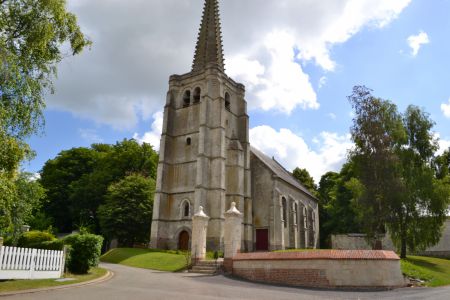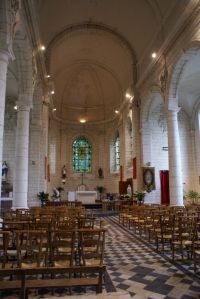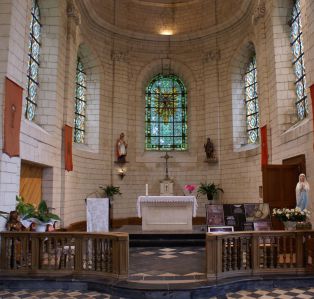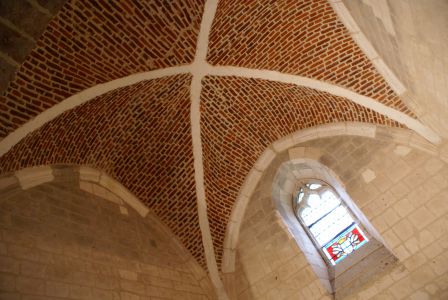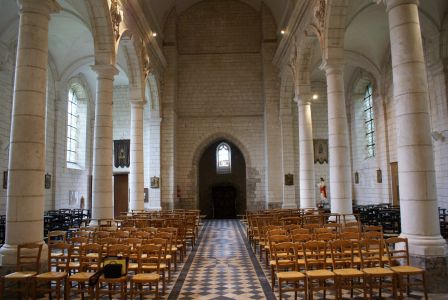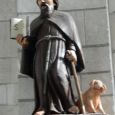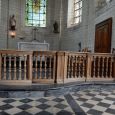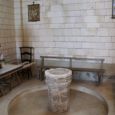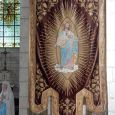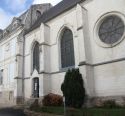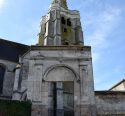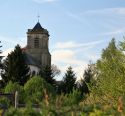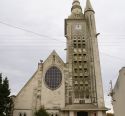Church | 1782 | Neoclassical | Catholic Church

Map
Opening hours
01 June - 30 September
Mon -
Tue -
Wed
Thu -
Fri 14.00 - 18.00
Sat 14.00 - 18.00
Sun 14.00 - 18.00
01 December - 07 January
Mon
Tue
Wed
Thu
Fri
Sat 10.00 - 17.00
Sun 10.00 - 17.00
01 April - 31 May
Mon
Tue
Wed
Thu
Fri
Sat
Sun 14.00 - 18.00
Guided tour
Religious offices
Saturday 6.30 pm
Sunday morning (once a month)
Description
Situated in the centre of the village of Hermaville, a « Village-Patrimoine », in an authentic and green setting, the church of St. Georges was listed as a Historical Monument in 1926. The building was rebuilt in 1782 ( nave and sanctuary) on the site of the previous church, whose architecture is known due to the water-colour drawings of the albums of Croy (no. 18) which represented the village at the beginning of the 17th century.
To reach the building it is necessary to cross the parish enclosure, and before entering, to admire the « porch-belfry » and its carved hooks on the steeple (1629).
Inside, the visitor is surprised by the light and airyness of the church, in spite of its sizeable dimensions for a village church.
In the neo-classical style, without a transept, it has three naves, abundently lit by contemporary stain-glass windows. Banners on the walls remind us of the existence since the end of the 19th century, of a local devotion to the Sacred Heart of Jesus.
In the sanctuary the two wooden statues by local artists represent Saint Antony and Saint Nicolas, and the baptismal font ( Renaissance), an 18th century communion bench, a beautiful ceramic « Stations of the Cross », a luminous stained glass window with the arms of Marshal Randon, are some of the elements of a decor which surprises with its great sobriety.
The church is the starting point for walks in the village and the surrounding countryside.
Photos
Remarkable elements
Les statues du chœur
Les statues en bois sculpté qui ornent le chœur datent du XVIIIe siècle. L'une pourrait représenter saint Nicolas, l'autre est une statue de saint Antoine du Désert, représenté avec le Livre et un cochon.
C'est, semble-t-il, à la fin du XIVe siècle, que l'on prend l'habitude de représenter saint Antoine accompagné d'un porc.
Le cochon ne rappelle pas la vie du saint mais fait référence aux Antonins, ordre fondé en 1095.Ces religieux élevaient des cochons pour nourrir les pauvres. Le lard qui entrait dans la composition d'un baume passait pour avoir des effets bénéfiques pour soigner les malades atteint du mal des ardents ou mal de Saint-Antoine.
Le banc de communion
Le banc de communion en chêne date du XVIIIe siècle. C'est une sorte de clôture séparant le chœur de la nef. Cet élément architectural à hauteur d'appui servait de séparation lors de la communion. Les fidèles s'y présentaient devant, généralement agenouillés, pendant que le prêtre leur présentait l'hostie. L'abandon de cette manière de communier date du Concile de Vatican II.Les fonts baptismaux
Les fonts baptismaux de pierre daterait du XVIe ou XVIIe siècle. Ils occupent le centre d'une "piscine", masquée pour des raisons de sécurité par un plancher amovible.D'une grande sobriété, simplement ornés d'un décor de corde tressée, ils pourraient provenir de l'ancienne église d'Hermaville, dont la destruction fut décidée en 1762 en raison de sa vétusté. L'église actuelle date de 1782.
La bannière du Sacré-Chœur
Cette bannière du XIXe ou XXe siècle, rappelle l'existence d'une dévotion locale au "Sacré-Cœur", instituée en 1878, à l'initiative de l'abbé Modeste Lefebvre, alors curé de la paroisse.
Jusqu'à une période récente, le pèlerinage en l'honneur du Sacré-Cœur prenait la forme d'un triduum qui s'achevait le quatrième dimanche de juillet.
Actuellement il se limite au samedi et au dimanche de ce même week-end.




